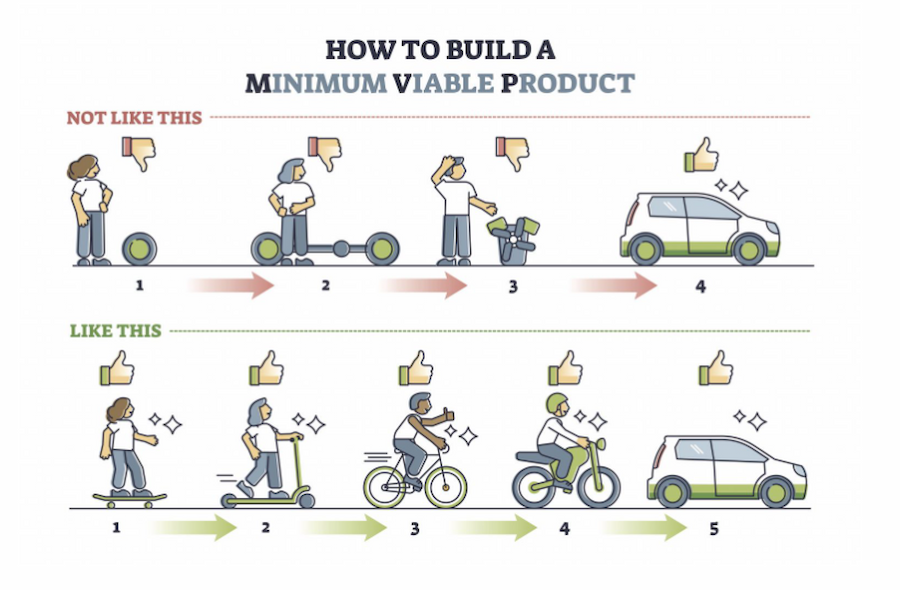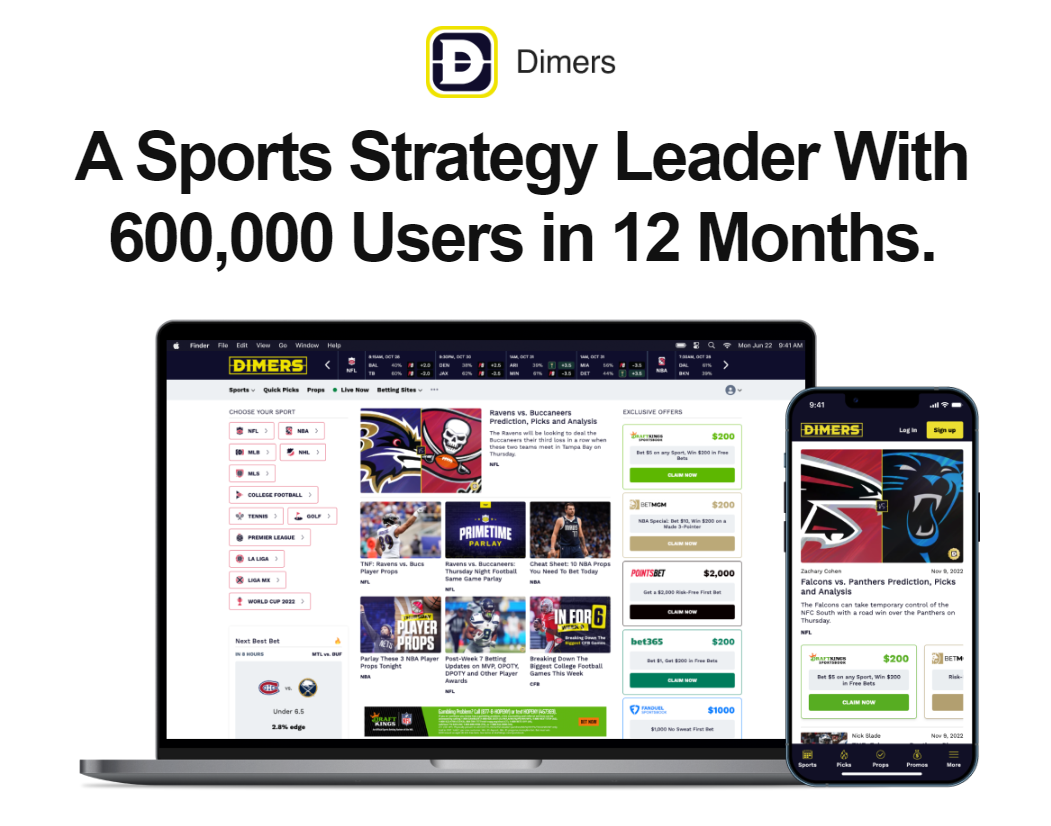iOS App Development Cost: What to Expect and How to Optimize Your Budget
The Apple App Store is home to mobile applications that run on iOS devices like iPhones or iPads.
And it’s quite a lucrative store too.
In fact, an average iOS app user spends more on applications than someone who uses an Android app.
If you’re an entrepreneur or big thinker, developing iOS apps is one attractive avenue you can explore to scale your business or increase your social impact. But have you ever wondered how much iOS app development costs?
Depending primarily on your app’s complexity, iPad or iPhone app development cost ranges from:
|
$30,000 to $60,000 |
For a basic iOS app |
| $60,000 to $300,000+ |
For a simple iOS app |
| $300,000+ |
For a complex iOS app |
As you can see, achieving excellence in iOS app development requires substantial financial commitments, typically falling within the range of $100,000 to $300,000 or more.
Hefty price tag? There’s another way.
Adopting a lean approach drives down costs, as demonstrated by our prosperous collaborators, Vello and Roamni. They initially invested $15,000 to $20,000 for design prototypes. From there, they were able to scale and find enough investments for a full-fledged app development project.


If you’re intrigued by the idea of developing iOS mobile apps, I recommend you continue reading. Discover how you can achieve your app development objectives without depleting your resources.
Here’s what’s in store for you in this article:
- Factors that influence iOS app development costs
- How to avoid spending too much on iOS app development
Let’s dive in!
6 Major Factors Affecting iOS App Development Cost
1. User experience and app design
The user experience (UX) is crucial when designing iOS apps. Studies show that around 50% of users lose faith in a company due to a bad mobile experience. About the same number won’t return to apps with bad aesthetics.
Investing in a meticulously crafted app and UX design stands as a crucial element in the success of iOS applications. This not only elevates conversion rates and user satisfaction but also contributes to bolstering the brand’s reputation. That is why around 10-20% of the overall project costs are typically allocated to the design phase.
The significance of a well-thought-out UX design goes beyond aesthetics. It also plays a pivotal role in delineating the project’s scope. A profound understanding of user needs and business objectives helps minimize expenditures on unnecessary functionalities and costly revisions.
Design is so crucial in ensuring the efficient use of resources that many of our projects at Appetiser begin with the design stage.
Like planning and designing a physical store, envision your iOS app’s design stage as the blueprinting process. But instead of traditional blueprints, our product designers utilize sketches, wireframes, and prototypes to visualize the app’s structure and layout.
Thorough sketches enable us to furnish you with an initial estimate for your iOS app development project. Subsequently, our adept designers construct a wireframe. Wireframes provide a comprehensive insight into the app’s UX flow and anticipate the design outcome.
As we navigate through the design phase, you gain access to an interactive prototype of the highest caliber. This prototype serves as a visual representation and a valuable tool to secure funding for the latter development stages.
For detailed insights into our design process and how it contributes to effective cost management in iOS app development, we invite you to schedule a free consultation with us.
2. Features and functionality
If you’ve visited a flagship Nike store, chances are you’ve encountered cutting-edge features like virtual try-on experiences, interactive installations, and digital customization options.
Implementing such futuristic features in retail stores comes with a hefty price tag, costing companies hundreds of millions of dollars.
The same principle applies to the development of iOS applications.
The complexity and range of features incorporated into an iOS app heavily impact its cost. More intricate features demand additional development time, increasing the overall price tag. At Appetiser, we consistently advise our clients to begin the development of their app idea with a minimum viable product (MVP) in mind.

Source: Inflectiv.co
An MVP concentrates on delivering essential features that enable users to make purchases and experience the platform’s core functionality. This approach speeds app launch, which provides the twin benefits of:
- Providing room for collecting user feedback
- Enabling the addition of improvements based on said feedback
From our extensive experience crafting successful iOS apps, we’ve identified key features that often suffice for launching a viable product:
- User registration and login
- Product/service/virtual item browsing and search
- Payment gateway integrations
- Reviews and ratings
- Social media integrations
While the temptation to incorporate additional “nice to haves” may arise, it’s essential to remember that the first Nike retail store in Portland, Oregon, had a simple and straightforward design typical of its era. Despite its simplicity, it effectively fulfilled its purpose and more.
Explore our article highlighting successful examples of MVP apps and related strategies for a deeper understanding of MVPs.
3. Team of developers
Factors such as your development team’s composition and geographic location influence the overall cost of iOS app development. The expertise and experience levels of individual developers also have an impact on expenses.
Location-wise, developers in different countries charge various rates.
Since there are around 200 countries worldwide, let’s compare the U.S. and India for simplicity’s sake.
I chose America and India for benchmarking because they both belong to the world’s 5 most valuable IT economies. Yet, their average hourly developer rates lie in sharp contrast, making a useful comparison. Notably, both countries also use English extensively in international business transactions.
As of 2023, the average hourly rate of US-based developers ranges between $36 and $62. In India, the going rate is from $18 to $39.
Aside from the location of your developers, the size and structure of your team also leave an impact on development expenses. In turn, the complexity of your iOS app and your target timeframe affect the structure of your development team.
To provide you with a clearer understanding, I’ve included examples of team structures below. Keep in mind that specific details may differ based on the specifications of your app.
Sample standard team
Suppose you are developing an iOS app without a tight deadline. Here’s what your app development team may look like:
- 1.0 Developer
- 0.5 Project Manager & Quality Analyst
This team structure shows that developing a typical iOS app requires at least 1 full-time developer, 1 part-time project manager, and 1 part-time quality analyst. In the latter part of this article, you will see how project managers and quality analysts impact app development costs
Sample accelerated team
Now, when aiming for a tight schedule and seeking to speed up the app development process, it might be necessary to augment the size of your team. Here’s what your team may look like in such a scenario:
- 2.0 Developers
- 0.5 Project Manager
- 1.0 Quality Analyst
So, for a time-sensitive iOS app development project, you need at least 2 full-time developers, 1 part-time project manager, and 1 full-time quality analyst.
In an accelerated team, your savings advantage is lessened. But you can consider this as a long-term investment for your app’s speed-to-market. With a quick app launch, you can leapfrog the competition and shorten the development cycle.
4. Number of integrations
When estimating the expenses for your iOS app development project, consider whether it operates independently or requires integration with external systems.
Standalone apps typically incur lower costs.
However, high-value applications often necessitate integration with systems such as customer databases, inventory management tools, and human resource systems, among others. These integrations contribute to the overall development expenses. Additionally, incorporating features from external services, known as third-party APIs, may result in the following monthly costs:
| Service | Functionality | API cost |
|---|---|---|
| Google Maps | Geolocation features, navigation, point-of-interest, street view | $200/month (but has flexible pricing) |
| ChatGPT | Smart chatbot functionality, AI-enhanced recommendations | $100-400/month (depending on the number of requests) |
| Login and signup integration, content sharing, invites | Free, but may require fees for certain types of requests | |
| Spotify | Controlling playback, creating and managing playlists, retrieving metadata | Free |
| Google Translate | Cloud machine translation | $20/month per million characters |
Meanwhile, you may need payment processors if your app’s monetization model relies heavily on in-app purchases and other similar income modes. Below are some examples of payment processors and their relevant fees:
| Payment processor | Transaction fee | Monthly service fee |
|---|---|---|
| PayPal | 1.90-3.49% + fixed fee | None or $30 for PayPal Payments Pro |
| Stripe | 2.9% + $0.30 | None |
| Square | 2.5-3.5% + $0.10-0.30 | None or $29 for Square Plus |
5. Tech stack
The tech stack encompasses many elements, mainly all the essential software for constructing apps.
Choosing a technology stack is a crucial factor in shaping the total expenses of app development. Opting for a less popular tool can notably increase development costs. The less popular tech stack tools are, the more limited the availability of specialists well-versed in such technology.
Conversely, tools that have superior features and perform well tend to be popular among app developers, driving down average development costs.
That is why, for building iOS apps, we at Appetiser Apps use Swift, a cutting-edge programming language supported by Apple. We also recommend you use it or hire developers familiar with it because of the tool’s great performance and industry-leading features.
6. Expenses after development
Investing doesn’t stop after you’ve designed and built your iOS app. You must extend but strategically place your investment to keep your app accessible and attractive to the public.
Post-development expenses fall into the following broad categories:
- App store fees
- Updates and maintenance
App store fees
Vendors must pay malls or markets for the privilege of displaying their merchandise. Likewise, iOS developers must pay the App Store to publish their apps for the public to see and download.
The Apple App Store charges the following fees for the privilege of gaining access to the online platform:
- $99 annually for the compulsory Apple Developer Program (provides developers access to app analytics, testing tools, and other resources for app marketing)
- 15% to 30% commission from income generated through in-app purchases (except sale of physical products)
Updates and maintenance
App updates and maintenance are important so people can keep downloading and using these digital products. Once download and usage rates drop, apps have little chance of sustaining themselves financially, leading ultimately to failure. Updates also safeguard apps from malware and other cybersecurity threats like unauthorized access to user information.
The frequency and magnitude of updates, as well as ongoing maintenance, inevitably contribute to the financial considerations of your app venture.
Additionally, investing in a dependable hosting service is necessary for your app’s continued functioning and accessibility. The cost of hosting services depends on the type and volume of content you intend to store on the servers.
Since update and maintenance costs are recurring expenses, your app’s monetization model must earn enough to finance its upkeep and keep it profitable. Product strategists, like those we have at Appetiser Apps, have a wealth of experience in this matter. Contact us for a complimentary call if you want to learn more.
How to save on iOS app development
1. Begin with the design
Consider this: The cost of a fully built app can reach upwards of $300,000 or more. Conversely, producing a design prototype can start from $15,000 while offering additional benefits like capturing the interest of potential investors.
Furthermore, a well-defined design provides a visual representation of the app’s features and layout prior to delving into development. This helps identify excessively intricate elements that may escalate expenses and diminish the chances of mid-stream alterations.
2. Create a leaner MVP or reduce features
Consider prioritizing essential features for your iOS app rather than incorporating all planned functionalities.
Evaluate whether certain features are truly indispensable, and be willing to trim unnecessary elements. Establishing your minimum viable product (MVP) as a starting point is beneficial to streamline development costs.
“When developing or designing, start by defining your MVP first. Avoid adding unnecessary features until you have proven that users value your initial vision. If not, then pivot and try to adjust your starting point. Only when your MVP is finding early adoption, or when you confirm your MVP is an actual stepping stone towards achieving your vision, should you look at further expanding the product.”
Creating a Minimum Viable Product (MVP) is crucial in curbing iOS app development costs. By carefully defining your MVP, you can steer clear of unnecessary features, resulting in substantial savings during the initial stages of development.
In the early stages, it’s imperative to ensure that the features incorporated directly address the core problems faced by your target audience and align with market needs. By gauging the outcomes after market release, you can then consider expanding the mobile app further.
Adopting the MVP approach has allowed us to assist numerous partners in achieving swift market entry and realizing significant returns on investment. One noteworthy example that illustrates this accomplishment is Dimers.

Within 3 months, Dimers was able to launch and make incredible impacts. The Melbourne-conceived sports prediction web app is storming the North American market — gaining over 1 million page views and hundreds of thousands of users within 30 days of launch!
Check out Dimers’ case study to learn more about their journey to app success.
3. Ensure quality assurance early on in the development stage
The early involvement of quality assurance (QA) professionals is a strategic move with significant financial benefits.
Integrating QA early on in the app development process identifies and rectifies potential problems and bugs sooner. This proactive approach ensures a smoother development process while leading to substantial cost savings that might have otherwise accumulated had problems not been detected earlier.
Depending on the size and complexity of your app, you might need to hire a dedicated quality assurance agent, a project manager, or even business analysts. These roles ensure the development cost remains within budgetary constraints while guaranteeing a robust and polished final product.
At Appetiser, we have QA professionals, business analysts, and testers who you may tap into during the vital phases of the development journey.
4. Avoid hidden app development costs
Most app development estimates account only for the design, development, and maintenance stages. However, it’s crucial to factor in other unseen costs, which often include:
- Management and administrative expenses
- App marketing costs
- Fees related to extra research and development (usually for rare or cutting-edge app features and third-party integrations)
To steer clear of hidden expenses in iOS app development, it’s essential to exercise diligence and proactivity during the planning and development phases. Consider the following recommendations to mitigate unforeseen costs effectively:
- Thoroughly define requirements. Before initiating development, meticulously outline and document your app requirements. This proactive step helps prevent scope creep and unnecessary modifications that could incur additional expenses.
- Conduct comprehensive due diligence. Research and select a reputable app development company or freelance developer with a transparent pricing structure. Scrutinize reviews, portfolios, and testimonials to ensure their track record aligns with your expectations. For example, the US-based Clutch review site has tagged Appetiser as one of Australia’s top developers. Information like this is vital to take note of.
- Establish detailed documentation. Implement well-defined documentation that clearly delineates the project scope, deliverables, timeline, and cost structure.
- Embrace an agile app development approach. Opt for a work method that prioritizes iterative development and regular communication with the development team. This fosters improved visibility into the progress and potential cost implications of any changes or adjustments.

Source: CyberHoot
- Maintain active involvement throughout development. Foster open communication with your development team. Regularly review and test the app at each stage to detect issues early on, reducing the likelihood of costly rework or significant revisions later in the process.
5. Contact app agencies that provide free consultations
Believe it or not, some app agencies will provide you with FREE and more nuanced advice regarding app development costs and how you can manage them. After all, your vision for an app might be completely different from ideas found in typical app development projects. In this case, contacting such agencies directly will greatly help your cost estimates.
We happen to be one such agency. So don’t hesitate to contact us should you have any questions related to app development costs and other topics on building app businesses.
Make a worthwhile investment in iOS apps
No one-size-fits-all equation can determine iOS app development cost in the dynamic realm of technology.
Numerous factors, ranging from feature intricacy to the skill set of the development team, contribute to the final price tag of mobile apps.
However, within this complexity lies an opportunity — a chance to craft a customized and innovative iOS app tailored to meet your specific business requirements and captivate your audience.
Embarking on this journey with a well-defined app idea, collaborating with a trustworthy and industry-leading app development firm, and recognizing the value of investing in a robust application can result in a transformative digital experience.
As the landscape of app development continues to evolve, it’s crucial to understand that the focus shouldn’t solely be on the cost but rather on the potential to reshape the future of your business or organization. Take the plunge, embrace the power of technology, and unlock the boundless possibilities that lie ahead.
Your success story in iOS app development eagerly awaits!

Jesus Carmelo Arguelles, aka Mel, is a Content Marketing Specialist by profession. Though he holds a bachelor’s degree in business administration, he also took courses in fields like computer troubleshooting and data analytics. He also has a wealth of experience in content writing, marketing, education, and customer support.


